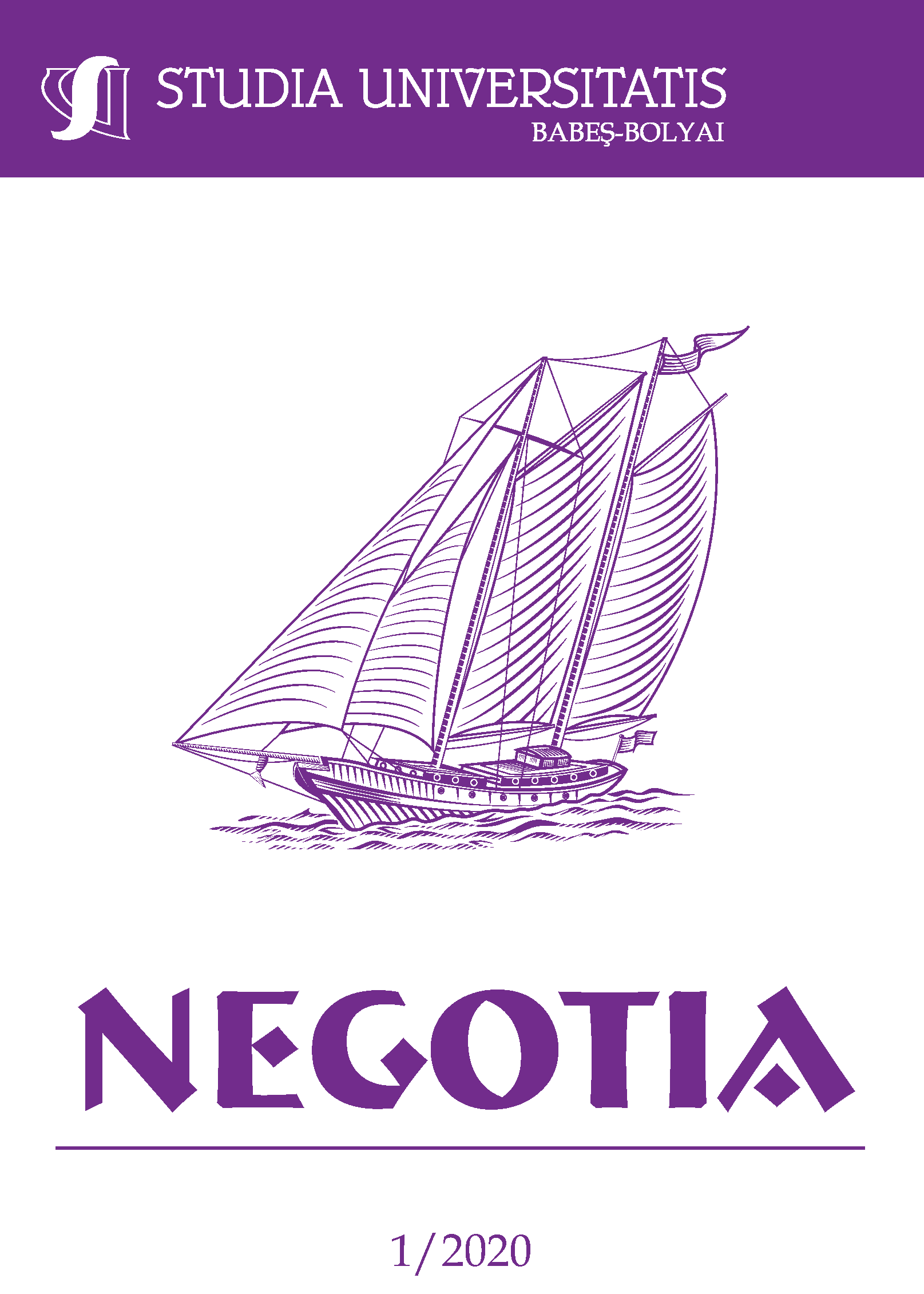NEW PERSPECTIVES ON THE PRIORITIES AND CHALLENGES OF THE INTERNAL AUDIT FUNCTION
DOI:
https://doi.org/10.24193/subbnegotia.2020.1.03Keywords:
internal audit function, priorities, challenges, cybersecurity, technologies.Abstract
In recent years, in the context of an increasingly dynamic economic environment, internal audit function knows an ascending trajectory as a consequence of the qualitative changes recorded following the application of a methodological and procedural framework appropriate to this activity. The present research highlights the priorities and the current challenges that the internal audit function faces in the Romanian space, but also worldwide faced in terms of expanding roles, emergence of new risks, grater stakeholder scrutiny and resourcing pressures. This scientific approach is made possible by using the information provided by the Institute of Internal Auditors through the Research Foundation of it, focused on Global Internal Audit Common Body of Knowledge (CBOK) 2015 Practitioner Survey in order to achieve a global perspective and a better understanding of stakeholders’ expectations of internal audit’ s purpose, function and performance and data documented following the opinion surveys of internal auditors conducted by KMPG and other specialist in the field - Deloitte, Protiviti.
JEL Classification: M42
References
Boța-Avram, C. (2010), “Provocări actuale ale funcției de audit intern”, Audit financiar, Vol. 8, nr. 69, pp. 16-23.
Boța-Avram, C. and Popa, I. (2011), “Evolution of internal auditing in Romania - a critical analysis”, Intenational Journal of Disclosure and Governance, vol. 8, no. 4, pp. 380-398.
Chersan, I.C. (2016), “Internal audit practices and trends in Romania and worldwide”, Audit Financiar, vol. XIV, no. 9(141)/2016, pp. 987-1002, DOI: 10.20869/AUDITF/2016/141/987
Chersan, I.C. (2017), “Câteva considerații despre munca auditorilor interni-A few considerations regarding the work of the internal auditors”, Practici de audit, CAFR, Vol. VI, nr. 1(21), 2017, pp. 7-14.
Deloitte ( 2018), Internal Audit 3.0. The Future of Internal Audit is now, available at https://www2.deloitte.com/content/dam/Deloitte/global/Documents/Audit/gx-internal-audit-3.0-the-future-of-internal-audit-is-now.pdf (accesed on 11th December 2019).
Deloitte (2019), Staying Relevant 2020 Hot Topics for IT Internal Audit in Financial Services. An Internal Audit Viewpoint, available at: https://www2.deloitte.com/content/dam/Deloitte/uk/Documents/financial-services/deloitte-uk-2020-hot-topics-in-it-internal-audit-in-fs.pdf (accesed on 15th December 2019).
Flemming Ruud, T. (2003), Chapter 3. The internal audit function: an integral part of organizational governance, pp. 74-96, in Bailey, A.D., Gramling, A.A., Ramamoorti, S. (editors), Research opportunities in internal auditing, Altamonte springs: The Institute of Internal Auditors Research Foundation.
Flora, Ph. E., Rai, S., Navigating Technology’s. Top `0 Risks. Internl Audit’s Role, available at file:///C:/Users/user/AppData/Local/Temp/Temp2_Foundation%20CBOK%202016%20Bundle%20(1)%20(3).zip/Found-ation%20CBOK%202016%20Bundle/IIARF%20CBOK%20Navigating%20Technology's%20Top%2010%20Risks%20Aug%202015.pdf (accesed on 11th December 2019).
Fülöp, M.T. and Szekely, S.V. (2017), The evolution of the internal auditing function in the context of corporate transparency, Audit Financiar, vol. XV, no. 3(147)/2017, pp. 440-450, DOI: 10.20869/AUDITF/2017/147/440.
Furtună. C., Ciucioi, A. (2019), Internal Audit in the Era of Continuous Transformation. Survey of Internal Auditors in Romania, Audit Financiar, vol. XVII, no. 3(155)/2019, pp. 452-472, DOI: 10.20869/AUDITF/2019/155/016.
Hashim, Fathyah; Ahmed, Essia Ries; and Huey, Yeo Min, Board Diversity and Earning Quality: Examining the Role of Internal Audit as a Moderator, Australasian Accounting, Business and Finance Journal , 13(4), 2019, 73-91. doi:10.14453/aabfj.v13i4.6
Like Jiang, Paul André & Chrystelle Richard (2017): An international study of internal audit function quality, Accounting and Business Research, DOI: 10.1080/00014788.2017.1357461
Moeller, R. R. and Witt, H. N. (1999), Brink’ s Modern Internal Auditing, 5th edition, New York: John Wiley &Sons, Inc.
O’Loughlin, C.J., Swauger, J. Internal Audit Quality Assurance and Improvement. A Call to Action, available at: file:///C:/Users/user/AppData/Local/Temp/Temp2_Foundation%20CBOK%202016%20Bundle%20(1)%20(3).zip/Found-ation%20CBOK%202016%20Bundle/Foundation%20CBOK%20IA%20QAIP%20Sept%202016%20V4.pdf (accessed on December 13th 2019).
Precob, C.I. and Rusu-Buruiană, A. (2015), The features of inetrnal audit in Rom ania. Study on the perception of internal auditors, Audit financiar, vol. 13, no. 9 (129), 2015, pp. 77-90.
Protiviti (2017), Top priorities for Internal Audit in Financial Services Organizations: Discussing the Key Financial Services Industry Results from the 2017 Internal Audit Capabilities and Need Survey, available at: https://www.protiviti.com/sites/default/files/united_states/insights/top-priorities-for-internal-audit-in_financial-services-organizations-protiviti.pdf (accessed on December 13th 2019).
Potriviti (2019), 2019 IT Audit Benchmarking Study. Today’s Toughest Challenges in IT Audit: Tech Partnership, Talent, Transformation. Assessing the International Leaders in an Annual ISACA-Protiviti Survey, available at: file:///C:/Users/user/Downloads/8th-Annual-IT-Audit-Benchmarking-Survey-ISACA-Protiviti-mis_eng_1019.pdf (accessed on December 13th 2019)
Protiviti (2019), Embrancing the Next Generation of Internal Auditing, available at: https://www.protiviti.com/sites/default/files/united_states/insights/2019-ia-capabilities-and-needs-survey-protiviti.pdf, (accessed on December 13th 2019).
Zinca Voiculescu, C. I. (2016), “Major trends of the internal audit function in credit institutions”, The USV Annals of Economics and Public Administration, vol. 16, issue 2(24), pp. 137-144.
Downloads
Published
How to Cite
Issue
Section
License
Copyright (c) 2020 Studia Universitatis Babeș-Bolyai Negotia

This work is licensed under a Creative Commons Attribution-NonCommercial-NoDerivatives 4.0 International License.






